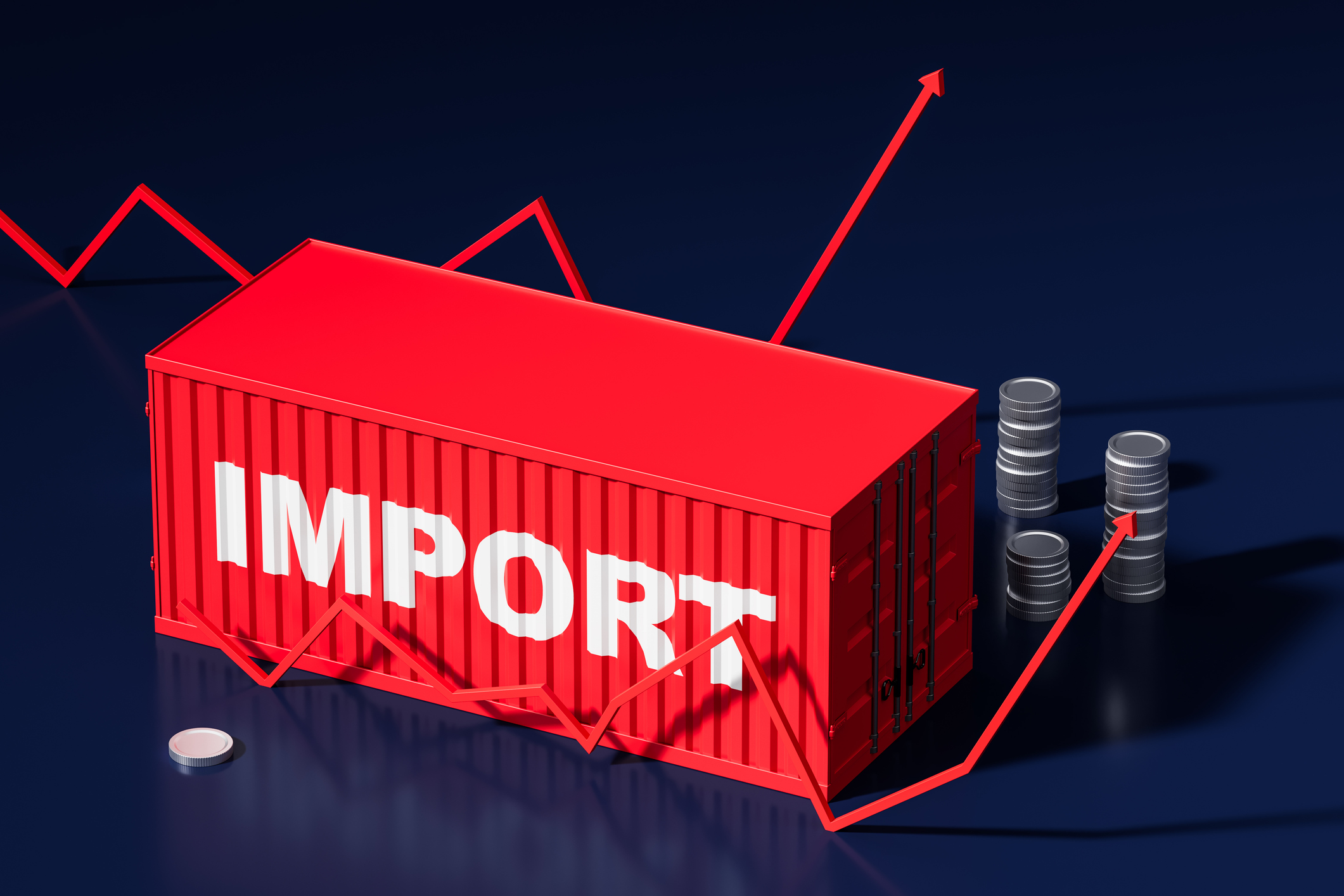- Why Duty Drawback Should Be a Priority in Your Trade Strategy
- Unused Merchandise Drawback: Strategic Flexibility for Market Volatility
- Manufacturing Drawback: A Strategic Advantage for Production Companies
- Substitution Manufacturing Drawback: Advanced Strategy for Operational Excellence
- Rejected Merchandise Drawback: Essential Risk Management
- Implementation Framework for Maximum Results
- Performance Metrics to Track
- Documentation Requirements Across All Programs
- CITTA Brokerage: Your Duty Drawback Implementation Partner
- Strategic Implementation Recommendations
- Maximize Your Duty Drawback Potential
After nearly a decade of helping companies navigate international trade complexities, the evidence is clear: duty drawback programs can really transform your bottom line. Yet businesses consistently leave millions on the table by not leveraging these powerful cost-recovery mechanisms.
Understanding the different types of duty drawback and their strategic applications is essential for maximizing your international trade profitability.
Why Duty Drawback Should Be a Priority in Your Trade Strategy
When analyzing trade operations, duty drawback represents one of the highest-impact, lowest-risk opportunities for predictable cash flow improvement. Under 19 U.S.C. § 1313, U.S. Customs provides several pathways to recover duties, taxes, and fees, effectively returning capital that’s already been deployed in your supply chain.
The recoverable portion depends entirely on the percentage of imported materials that are ultimately exported, which varies significantly from manufacturer to manufacturer. Consider this scenario: a cosmetics manufacturer imports surfactants from China, and 17% of their finished products are then exported. They can claim drawback on that 17% portion of their imported materials—provided those materials are eligible for drawback programs.
Unused Merchandise Drawback: Strategic Flexibility for Market Volatility
Unused merchandise drawback provides essential insurance against market uncertainty. This program enables duty recovery on imported goods exported in their original condition within five years of importation.
Market Applications: Retail and distribution companies leverage this extensively during demand fluctuations. When seasonal merchandise underperforms or market conditions shift, unused merchandise drawback transforms unsold inventory from a liability into a recoverable asset.
Strategic Benefits:
- Flexibility to redirect inventory to different markets
- Risk mitigation for seasonal or fashion goods
- Cash flow protection during demand fluctuations
- Opportunity to test new markets without duty penalty
Manufacturing Drawback: A Strategic Advantage for Production Companies
Manufacturing drawback can provide a significant advantage to any company producing goods that rely on imported materials and that are subsequently exported. This program allows you to recover up to 99% of duties paid on imported raw materials incorporated into exported products.
Strategic Application: Every eligible component you import and transform into an exported product becomes eligible for duty recovery. Note that certain materials, including steel, are specifically excluded from drawback eligibility. Textile manufacturers routinely achieve substantial duty recovery rates on their eligible import spend.
Competitive Advantage: Beyond cost savings, reducing effective material costs through duty drawback provides pricing flexibility in competitive export markets, which is a critical factor for market penetration strategies.
Key Requirements for Manufacturing Drawback:
- Imported materials must be used in manufacturing exported products
- Documentation must establish clear connection between imports and exports
- Claims must be filed within five years of import
- Products can be manufactured by the importer or contract manufactures
Substitution Manufacturing Drawback: Advanced Strategy for Operational Excellence
For sophisticated manufacturing operations, substitution manufacturing drawback optimizes inventory management while preserving duty recovery opportunities. This program allows you to use domestic or duty-paid substitute materials in production while claiming drawback on duties paid for imported materials.
Important Note: Substitution is not a separate type of drawback, but rather a provision that can be applied to any of the three main drawback types (Manufacturing, Unused, or Rejected). Companies can file using either the substitution provision (using HTS codes only) or the Direct Identification provision (requiring specific serial numbers, style numbers, or part numbers).
Operational Benefits: This approach provides production flexibility without sacrificing financial benefits. Companies using substitution drawback can achieve significant improvements in inventory turns while maintaining full duty recovery eligibility—enhancing working capital efficiency.
Critical Requirement: Substitute materials must match the kind and quality of imported merchandise, with meticulous recordkeeping to demonstrate compliance.
When to Consider Substitution Drawback:
- Need for production scheduling flexibility
- Inventory management optimization requirements
- Multiple sourcing strategies for same materials
- Seasonal demand variations
Rejected Merchandise Drawback: Essential Risk Management
All companies importing high-value or specification-critical products should establish rejected merchandise drawback procedures. This program provides essential financial protection when imported goods fail quality standards or arrive damaged.
Time-Critical Process: Non-conforming merchandise may be exported or destroyed under customs supervision to qualify for rejected merchandise drawback. A Notice of Intent to Export, Destroy, or Return Merchandise (CBP Form 7553) must be submitted at least five working days before returning the goods to CBP custody, allowing CBP the opportunity to examine the merchandise. When procedures and documentation are handled promptly, claims can often be processed within a few weeks, helping minimize the impact on working capital.
Industry Impact: In pharmaceuticals and precision manufacturing, rejected merchandise drawback can recover up to 99% of duties on defective imports—turning potential losses into neutral outcomes.
Qualifying Conditions:
- Merchandise fails to conform to sample or specifications
- Goods arrive damaged or defective
- Products don’t meet regulatory requirements
- Items are shipped by mistake
Specialized Drawback Applications
While all drawback programs fall under the three main types (Manufacturing, Unused, and Rejected), certain industries have unique applications worth noting:
Wine Drawback: Wine producers can implement specialized programs for flavoring wine operations, recovering duties on imported wine used in flavoring operations, provided the flavored wine is subsequently exported.
Additional Industry Applications: Various specialized sectors including aerospace, petroleum derivatives, and other industries may have unique drawback opportunities that still operate under the three main drawback types but with industry-specific considerations.
Implementation Framework for Maximum Results
Our team’s systematic approach consistently delivers optimal results across all duty drawback types:
Phase 1: Strategic Assessment Analyze import/export patterns, manufacturing processes, and trade flows to identify optimal program combinations and quantify potential recovery amounts.
Phase 2: Compliance Infrastructure Establish recordkeeping systems and operational procedures that ensure regulatory compliance while minimizing administrative burden.
Phase 3: Claims Optimization Implement streamlined processes for claim preparation and submission, typically reducing processing time significantly compared to manual approaches.
Phase 4: Performance Monitoring Track key metrics to ensure optimal program performance and identify improvement opportunities.
Performance Metrics to Track
Key Performance Indicators:
- Claim processing time (target: 45 days or less)
- Compliance audit success rate (target: 100%)
- Percentage of eligible transactions claimed
- Overall program ROI and cash flow impact
Documentation Requirements Across All Programs
Essential Documentation:
- Import entry documents and customs forms
- Commercial invoices and packing lists
- Export documentation and shipping records
- Manufacturing records and bills of materials
- Inventory tracking and allocation records
- Certificate of destruction (for destroyed merchandise)
CITTA Brokerage: Your Duty Drawback Implementation Partner
At CITTA Brokerage, our team has implemented duty drawback programs across all categories for hundreds of clients, consistently delivering measurable results. Our systematic approach ensures optimal program selection and implementation based on your specific operational requirements.
Our comprehensive duty drawback services include:
- Strategic assessment and program selection
- Compliance infrastructure development
- Documentation system design and implementation
- Claims preparation and submission
- Performance monitoring and optimization
- Regulatory compliance and audit support
We work directly with your teams to identify the highest-value opportunities and implement sustainable programs that deliver long-term competitive advantages.
Strategic Implementation Recommendations
Immediate Actions:
- Assess current import/export patterns for duty drawback eligibility
- Identify which duty drawback types align with your operations
- Evaluate potential recovery amounts and implementation costs
- Establish documentation and recordkeeping systems
- Develop internal processes for ongoing program management
Long-term Strategy:
- Integrate duty drawback planning into sourcing decisions
- Align export strategies with maximum duty recovery opportunities
- Establish performance metrics and regular program reviews
- Train key personnel on program requirements and opportunities
Maximize Your Duty Drawback Potential
Companies that move quickly on duty drawback implementation gain sustainable competitive advantages. The programs outlined represent immediate opportunities to improve cash flow, reduce operational costs, and enhance export competitiveness.
Getting started costs you nothing. Your only investment is staff time for analysis and implementation.
Ready to quantify your duty drawback opportunity? Schedule a discovery call today where our team will analyze your specific trade operations and show you how these programs can drive measurable results for your organization. Let’s discuss your potential for transforming paid duties into competitive advantages.



